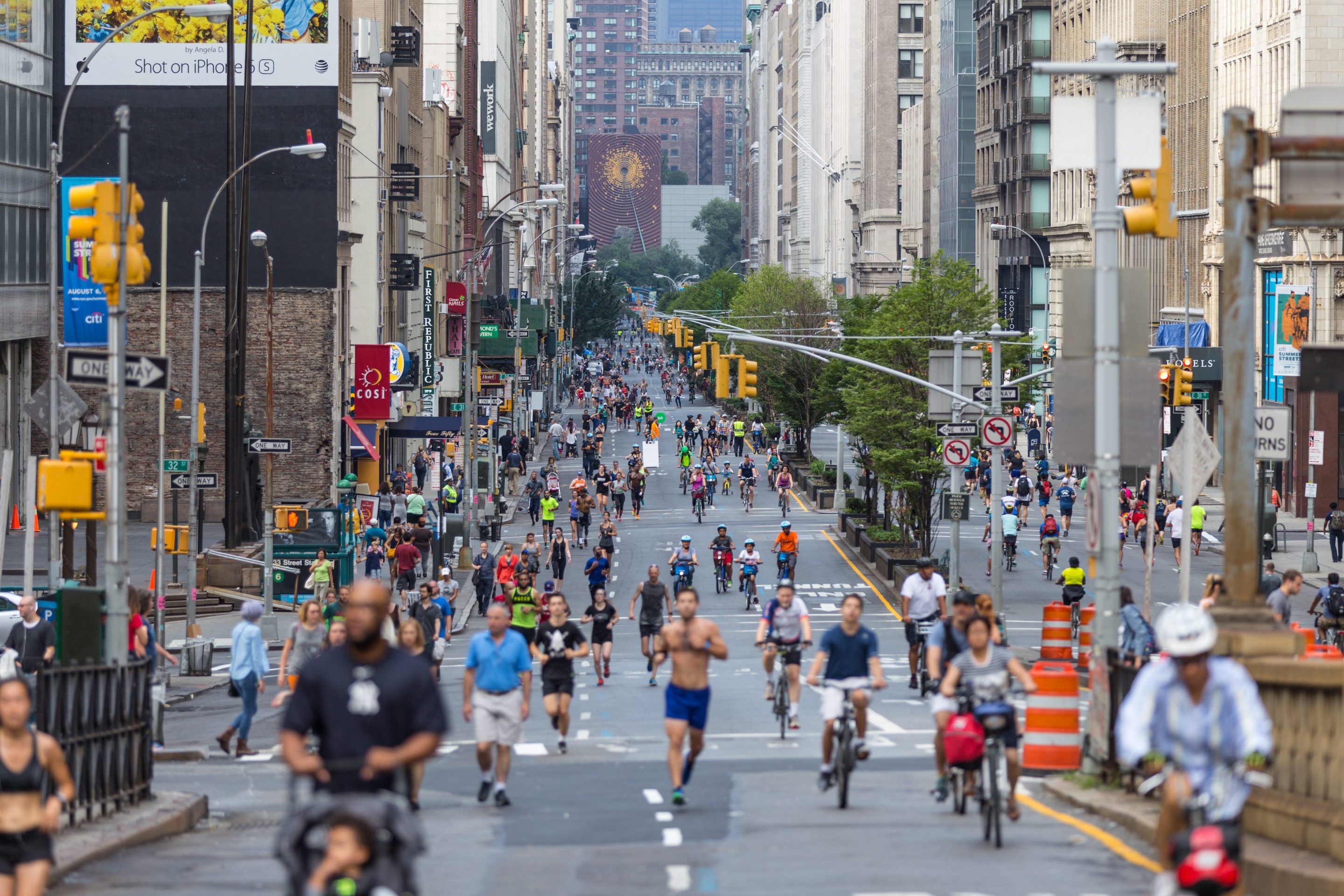
Queens got the money.
The proposed final the Queens Bus Network Redesign will include $30 million to pump up service, and bring the total number of local routes in The World's Borough from 83 to 91.
"We have a once-in-a-generation opportunity to create a vibrant 21st-century bus system that can support the economy and the opportunity that we want for Queens," said MTA Chairman and CEO Janno Lieber on Tuesday. "This is where it starts."
The $30 million will fund 15 entirely new local routes and one new express route between southeast Queens and Manhattan, and a big expansion in the number of residents who will have access to 10-minute-or-better bus service. Currently 60.1 percent of Queens residents live within a quarter-mile of such weekend bus service, but the proposed network redesign expands that to 68.9 percent, or 200,000 more people.

The process to redesign the bus network in Queens dates back to the start of 2020 when the agency's initial plan to create an entirely new bus network left many people extremely pissed off. The MTA unveiled another draft plan last March, which went through its own public outreach process culminating in the proposed final plan that's now on offer.
As the agency said last year, the new design will make a big push to expand the bus system's connectivity to subway and rail options in Queens via the use of "rush" routes. Those routes will provide local service in northeast and southern Queens, with fewer stops as the buses get closer to subway and commuter rail hubs.
The original bus redesign attempt was sought to rip up the entire map yet not add more service, a process that led to confusion and angst across Queens because it was simply a reallocation of all of the existing resources that led to easily determinable winners and losers.
For those reasons, the MTA has emphasized the money being added to the system, the agency's receptiveness to public comments on the draft plan and the fact that the routes will be familiar to Queens residents.
For instance, the bus stops will be spaced roughly 1,151 feet apart, up from the current 818 feet, yet the agency says 83 percent of bus riders will still be using the same bus stop once the redesign is in place. That will be accomplished by getting rid of underused stops, according to agency officials.
The new draft plan drew almost 4,000 comments from the public. The agency went as far as summarizing the commentary it received on the 25 most commented upon routes, and showed that it was willing to play ball on the overwhelming majority of feedback that dealt with keeping bus stops or service patterns the way they were.

Public buy-in from riders and elected officials will be key for the agency going forward, especially after the hubbub that derailed the first attempt to redesign the routes. To that end, the MTA is doing a full round of outreach to every Queens community board in 2024, and will supplement that with five open houses, a virtual town hall, outreach at bus stops and briefings with elected officials.
Officials at the Tuesday press conference urged Queens residents to get involved in the process. Queens Borough President Donovan Richards previously criticized the first redesign attempt, but has called himself a salesman for the new draft plan ... after this next round of outreach.
"We know that our bus lines have not kept pace with the growth of our borough, and this was really an opportunity for us to fix them," he said.
Meanwhile, City Council Transportation Committee Chair Selvena Brooks-Powers (D-Queens) was critical of the plan.
"I have serious concerns," she said at the press conference. "The changes proposed to help streamline and speed up service could also leave many people in my district at a severe disadvantage, especially with the addition of congestion pricing in the city."
Brooks-Powers high-tailed it out of the press conference, so it was unclear why she what part of a $30-million service hike she opposed. Later, state Sen. Leroy Comrie (D-Queens) suggested that Brooks-Powers was concerned that her district, where the MTA is introducing a number of rush routes, might end up with "too much" bus service.
"The chair is concerned because in trying to take care of our community, they did too much," said Comrie. "So it's about tinkering. She's upset because she wants to get it right, she's not upset because it's all wrong. What is actually happening was, we went from one bus line in Rosedale to four bus lines, and that'll confuse people so she wants to see that cleaned up."

Brooks-Powers did not respond to Streetsblog's follow-up question.
The MTA expects the redesign to officially hit the streets in 2025 at the earliest.






